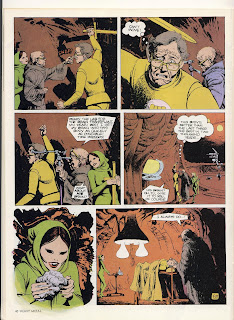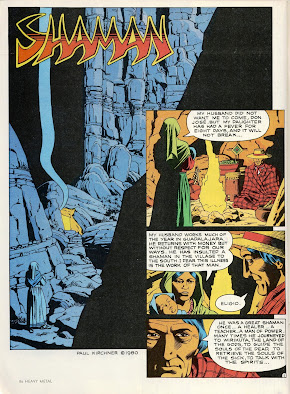Book Review: 'The Panorama Egg' by A. E. Silas
3 / 5 Stars
As best as I can tell, ‘The Panorama Egg’ is the sole book published by A(nne) E. Silas (information on the author’s exact identity is not available on the web). ‘Egg’ (224 pp.) is DAW book No. 302 and appeared in August 1978; the cover illustration is by H. R. Van Dongen.
The panorama egg of the book’s title refers to an egg- usually of synthetic construction- that has been hollowed out and a landscape carefully painted on the interior of the shell. A small aperture is made in the end of the egg through which one can look in and admire the artwork.
Hal Archer is unhappy with his life. He is in his early 30s and out of shape; his wife has left him for another man; and while he is on track to become a full partner in the law firm where he works, he feels unsatisfied and adrift. His one real pastime involves collecting panorama eggs. The one egg he yearns to find is a unique egg where the interior scenery is not static but in fact the image of living world, perhaps a world located in another dimension.
On a cozy evening at the home of his actor friend Henry Patterson, Archer meets an enigmatic little woman named Mera Melaklos; in due course Melaklos offers Archer the panorama egg he has been seeking. Gazing into the egg’s interior, Archer espies a grassy sward, trees, blue skies, and tufts of clouds. When Melaklos invites him to journey to the world encapsulated within the egg, Archer agrees. And instantly he is transported to the land known as Dolesar.
Once in Dolesar, Archer embarks on a series of adventures engineered by the mysterious Melaklos. It seems that there is strife growing among the medieval towns and cities and rural areas of Dolesar; there are rumors of depredations committed by ‘tiger men’, who are enthralled by the sorcery of a Dark Lord. Archer gradually comes to realize that he is far from a tourist in the strange world contained in the panorama egg; indeed, he may be the linchpin of a last, desperate plan to combat the nefarious designs of the Dark Lord. But Archer is no wizard, and in a land where magic works, that can be a major hazard to one’s liberty and life….
In some ways ‘Egg’ approaches the genre much like the Thomas Covenant the Unbeliever series by Stephen R. Donaldson, which also appeared in the late 70s, and featured a contemporary protagonist adrift in a strange landscape. However, Silas’s Archer, while not the most adept of sword wielders, is refreshingly devoid of the relentless angst that belabored every nuance of the Covenant character.
As a first-time novel, ‘Egg’ has its strengths and weaknesses. The novel starts with an interesting premise and an offbeat approach to inserting a modern man into a fantasy world peopled by giants, dwarves, cat people, and sea serpents. However, Dolesar itself is a rather generic fantasy setting, and the narrative loses quite a bit of momentum once the action moves to that locale. It’s not until well into the midway portion of the book that the Deep Secrets and Conspiracies hinted at throughout the initial chapters gradually are disclosed, and Archer takes a more active role in his defense of the realm.
‘The Panorama Egg’ might best be enjoyed by readers looking for a more low-key fantasy adventure, one featuring a small cast of characters, and an emphasis on the dialogue-mediated psychological and emotional interactions among these characters. Readers seeking a novel with the larger-than-life sweep and scope of epic fantasy won't find it in this story.
Alfonso Azpiri “Lorna Y Su Robot” (1983)
1 hour ago














































.jpg)






















